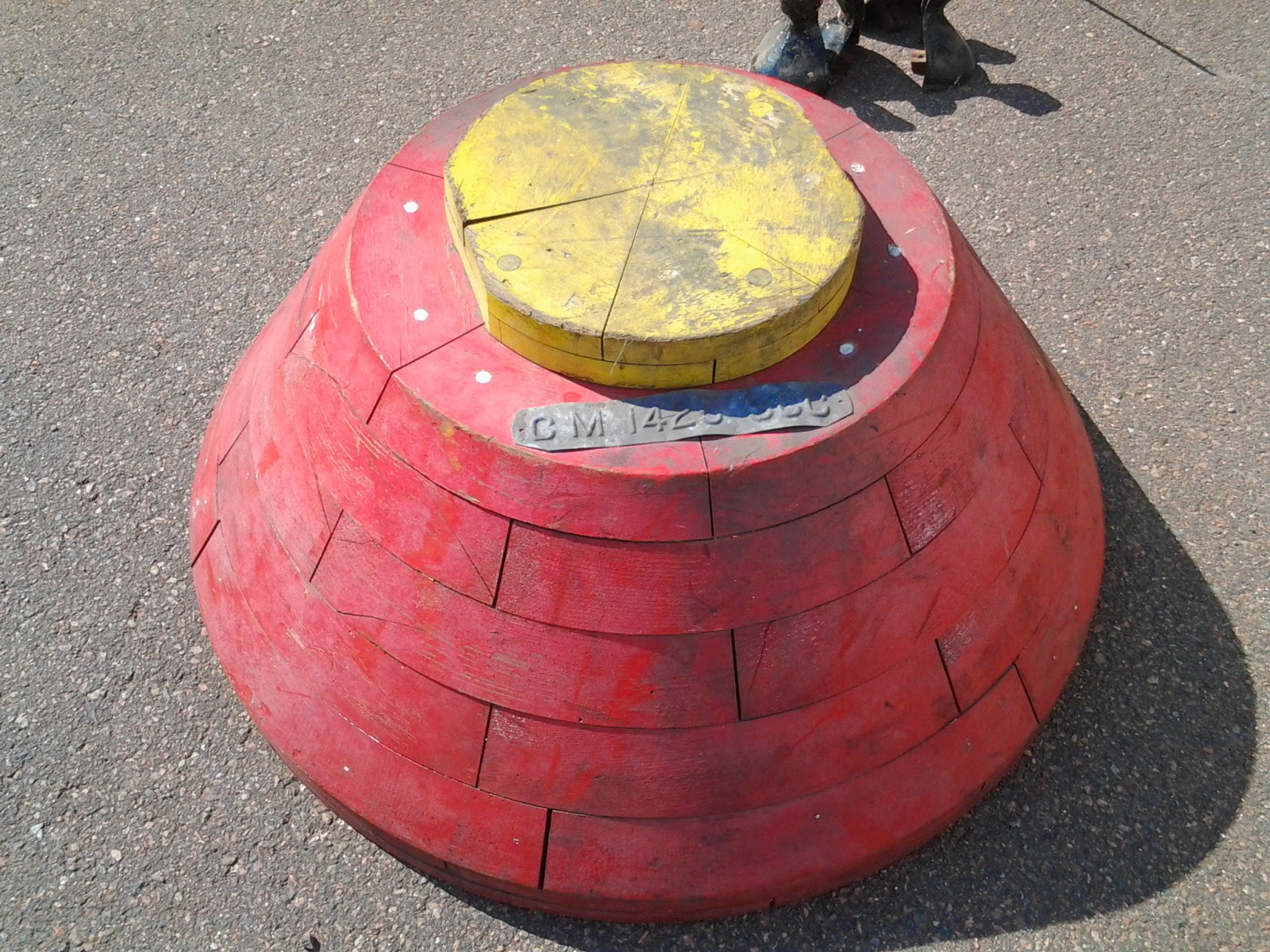I made these coffee tables from the molds.
The tables measure 30" wide.
Here's information about Trenton Ironworks from Wikipedia.
TrentonWorks is an
industrial manufacturing facility located in the town of Trenton, Nova Scotia, Canada. this collection of factories on the bank of
the East River of Pictou has witnessed a large variety of industrial
operations, ranging from steel making (the first steel plant in Canada),
rolling mills, forging, shipbuilding, munitions manufacturing, rivets and
bolts, and most recently (and longest lasting) rail cars.
The
extensive plant is being converted to manufacture wind turbine components for
South Korean industrial conglomerate Daewoo
Shipbuilding & Marine Engineering in its
first foray into North America; this is being made possible through
corresponding investments by both the Government of Nova Scotia and the
Government of Canada.
Below image cf. www.doncoshhistoryoftrenton.blogspot.ca
Here’s
some information about sand casting.
Sand casting is used to make large parts
(typically Iron, but also Bronze, Brass, Aluminum). Molten metal is poured into
a mold cavity formed out of sand (natural or synthetic). The processes of sand
casting are discussed in this section, include patterns, sprues and
runners, design
considerations, and casting
allowance. The cavity in the
sand is formed by using a pattern (an approximate duplicate of the real part),
which are typically made out of wood, sometimes metal. The cavity is contained
in an aggregate housed in a box called the flask. Core is a sand shape inserted
into the mold to produce the internal features of the part such as holes or
internal passages. Cores are placed in the cavity to form holes of the desired
shapes. Core print is the region added to the pattern, core, or mold that is
used to locate and support the core within the mold. A riser is an extra void
created in the mold to contain excessive molten material. The purpose of this
is feed the molten metal to the mold cavity as the molten metal solidifies and
shrinks, and thereby prevents voids in the main casting.
Typical
Components of a Two-part Sand Casting Mold.













I made this amazing table but, being a total DIY idiot, I mixed up the steps and put the finish on before I had done the transfers of the wine logos onto the wood, so of course they didn't actually transfer. Is there anything I can do to fix this or am I stuck with my table without the wine logos? Thanks for the awesome idea and the instructions.woodworkingbuddy
ReplyDelete